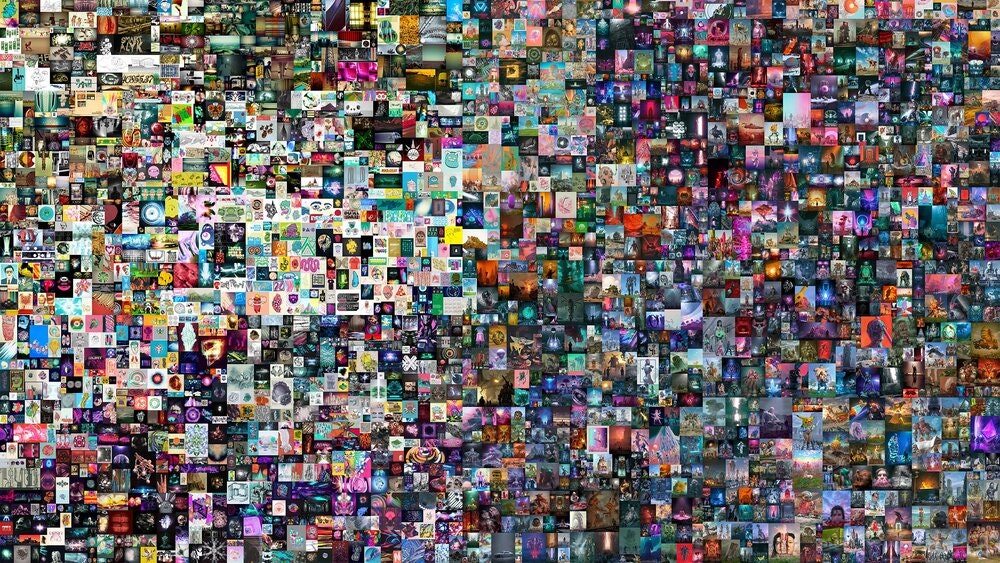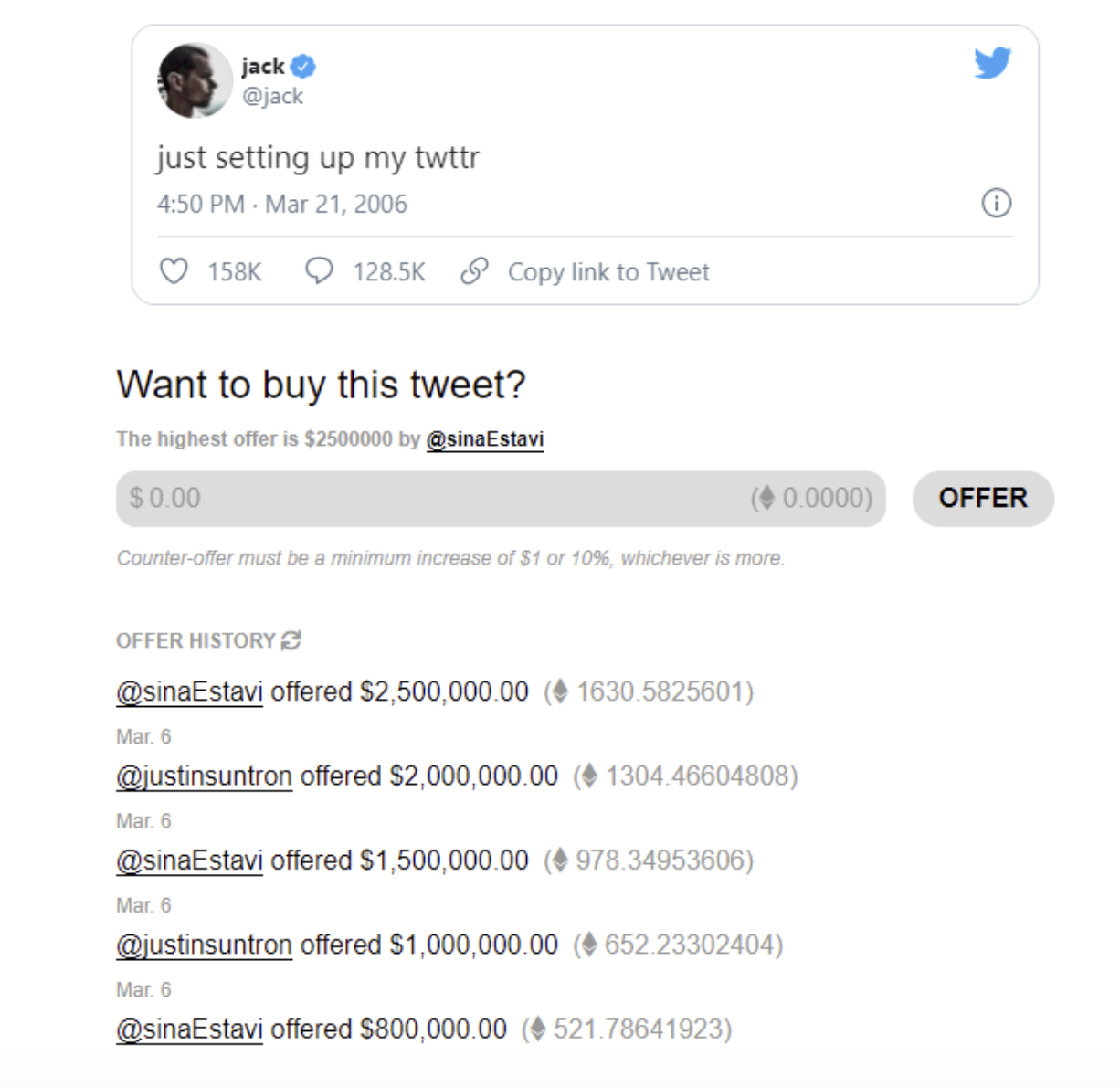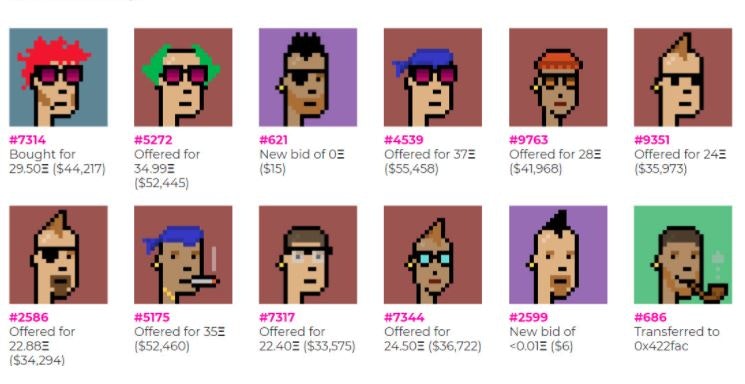What are Non-Fungible Tokens (NFTs)?
José Oramas
28 Jun 2021
•
6 min read
NFTs (Non-Fungible Tokens) have become wildly popular in the mainstream, with several DeFi protocols developing a space for this trend. The NFT craze has exploded in recent months by calling worldwide attention from numerous investors and artists, partly due to multi-million dollar acquisitions of digital works.
On March 11, Mike Winkelmann — a digital artist that goes by the pseudonym of Beeple — auctioned his artwork called "Everydays", a collage of 5000 digital images sold for US$69 million in the auction house Christie's.

Big names from the music and the art industry have joined, tokenizing their albums and artworks, like Snoop Dogg and Kings of Leons. Even TIME magazine released three unique edition covers in the form of NFTs. Billionaire investor Mark Cuban found a way to monetise this trend, launching a Shark Tank-style program to audition NFT project ideas. So with all this in mind, what are NFTs? Why are they taking the mainstream by storm?
Explaining NFTs##
Non-fungible Tokens are crypto-assets that serve as digital representations created with blockchain technology. Despite having the same underlying technology as cryptocurrencies, they are not interchangeable nor divisible.
Think of fiat money, for instance. If you exchange a 50 dollar bill with someone, it's worth the same, which is why it is a fungible tool. NFTs are different, as every asset contains metadata verifiable on the blockchain. This metadata tracks its authenticity, so there cannot be two similar pieces.
NFTs can only represent ownership of unique items and commodify digital assets in art, music, sports, card collections, or other entertainment. Even a single tweet can be auctioned. Jack Dorsey, CEO of Twitter, sold the world's first tweet for two million dollars a month ago.
A Brief History of Digital Collectibles##
Although their popularity is recent, NFTs began in 2012 with CryptoKitties, which are blockchain-based animated cats that could be collected and auctioned. The NFT industry grew from US$30 million to 300 million by the end of 2020, and it's expected to grow bigger by 2021.
The current NFT market cap is over US$ 26 billion, and the demand is nowhere near decreasing. During the first quarter of 2021, over US$2 billion was spent on NFTs. This is an increase of 2,100% from the last quarter of 2020.
The top market for NFTs is CryptoPunks, with an 8,940 ETH market cap —roughly US$ 23,024,000. CryptoPunks are a set of unique 24x24 pixel art, punky-style collectible images. They are one of the oldest collectibles in the NFT space, released in 2017 by Larva Labs on the Ethereum blockchain.
Characteristics of NFTs##
There are many features that make NFTs different from just a regular digital file, some of them are:
-
Collectible items: NFTs give value to unique pieces of work created in the digital world, capable of being preserved and collected. These digital pieces can range from a painting, a music album, a video, an animated gif, or pretty much any project or idea.
-
Blockchain Standards: Several DeFi platforms have their standards to create digital collectibles, ensuring that the product is unique. The ERC-721 was the first standard used by NFTs, which are written on the Ethereum blockchain. Every standard is a smart contract, and they can track the owner of a unique identifier.
-
Security and ownership: NFTs are unique files that differ from other digital files that can be easily duplicated. Every NFTs has a certificate on its property. By acquiring one of these assets, it entirely belongs to you.
-
Verification: Blockchain allows verifying assets to a much more complex level, like who has bought or sold an NFT, who is its current owner, and who is the original creator of the artwork in the first place. Every NFT has unique data stored on the blockchain through a smart contract —they cannot be destroyed, deleted, or replicated.
What Does Tokenization Mean?##
Tokenizing refers to turning real-world assets into digital tokens on a blockchain that can be traded without needing a third-party broker. This can be done by turning sensitive and meaningful data into a random string of symbols that retains all the necessary information about the data. In essence, tokenization is the art of issuing blockchain-based tokens that can be stored, transferred, and traded in the digital world.
So how does this process help artists and musicians? Tokenization does not require a significant investment to start with, allowing retailers to bid on smaller NFT projects, benefiting underground artists as well. It enables faster transactions with a simplified process with real-time traceability and validation, removing the physical barriers and geographical limitations.
Any artist can tokenize their work by outsourcing a blockchain development company or using open-source smart contracts online
How To Create NFTs?##
If you're looking to create your own NFT, the process is relatively straightforward and does not require expertise in coding. First of all, you'll have to choose on which blockchain you want to launch your NFT. Ethereum is currently the most popular platform to do so. However, you can use the following protocols:
- Binance Smart Chain (BSC)
- Tezos
- Polkadot
- Cosmos
- EOS
- Flow
Keep in mind every platform has its own NFT token standards. If you build using BSC, you can only sell your NFTs on platforms that support BSC-based assets. You cannot sell them on an Ethereum-based platform like OpenSea.
Later, you will have to "mint" your NFT work, whether be a music video, an image, or any other format. To do this, you need a wallet that supports the standard of the chain you're using. For instance, let's say you're using the ERC-721 NFT token standard. Once you have it, go to an NFT platform that allows you to connect your wallet and upload the file you want to mint. The most popular markets that support the Ethereum standard are OpenSea, Rarible, and Mintable.
Where Can You buy NFTs?##
There are many NFT markets where you can search for a handful of brands, artists, and musicians promoting their work. One of the largest markets is OpenSea, a decentralized marketplace that stores rare digital assets. Some other popular options are Rarible, SuperRare, AtomicMarket, and Crypto.com.
NBA Top Shot has become the number one platform for collecting and trading officially-licensed video highlights for basketball fans, launched in July of 2019 due to a collaboration with the National Basketball Association and Dapper Labs, a company that delivers blockchain-based products and supports digital collectibles. Some of these highlights are being sold for over US$100,000.
If you have crypto, you can easily buy it on any of these marketplaces. The process may vary between different platforms, and the way to store NFTs is using a wallet that supports NFTs, like Trust Wallet or AlphaWallet.
What is the Future of NFTs?##
One of the most heard opinions about NFTs is that artists can finally connect with their fans and earn something for their work. When it comes to music, the implications of crypto art is changing the industry. More musicians are joining the movement by auctioning their tokenized work for large sums in DeFi marketplaces.
One of the most popular examples is the American rock band Kings of Leon, which announced an NFT-based album a month ago, selling "tokenized" tickets, making them the first rock band to release an album using blockchain technology.
Artists from other genres soon joined the movement, like DJ 6LAU, who sold his tokenized album for 11 million USD, or Snoop Dogg, who collaborated with the digital artist behind the famous Nyan Cat meme, creating the "Nyan Dogg," on the OpenSea marketplace.
No Need for Record Labels
A critical feature about NFTs is that artists can sell their tokenized work on DeFi marketplaces like OpenSea or Crypto.com without relying on major record labels. Many analysts in the industry now believe this could change the power structure that record labels have with their artists. For instance, many musicians have complained about how low the payouts and royalties from streaming platforms like Spotify are after labels and distributors take a cut.
Connecting with Fans
Another reason why so many artists are joining this trend is not only because of the benefits it provides, but it also helps them to connect with their fanbase. Famous UK singer Boy George recently said that NFTs are "a new way of connecting with fans," adding that art is "more available to people."
Considering how big the industry has become, it is no surprise that several decentralized platforms and musicians are joining to promote their work. Such is the case with Crypto.com, an exchange that launched an NFT marketplace reuniting artists, musicians, and athletes to promote their exclusive content for their fans.
Gaming and NFTs
You have probably heard of Decentraland, a platform that has become quite popular for attracting crypto-enthusiast and gamers alike. Decentraland is an Ethereum-powered virtual reality world where users can buy pieces of land with MANA, its utility token, and buy and sell non-fungible tokens.
Conclusion##
Non-Fungible Tokens are taking the mainstream by storm, allowing a broad set of investors, from retailers to institutions, to bid on a handful of projects. The market has had a massive 2000% growth in just three years, and it is expected to grow bigger by the end of 2021.
More musicians, artists, and anyone with an idea can join, making the NFT community stronger and motivating potential artists to participate and experience the crypto world with their projects.
José Oramas
Fintech and finance writer, with keen interest in blockchain and crypto.
See other articles by José
WorksHub
Jobs
Locations
Articles
Ground Floor, Verse Building, 18 Brunswick Place, London, N1 6DZ
108 E 16th Street, New York, NY 10003
Subscribe to our newsletter
Join over 111,000 others and get access to exclusive content, job opportunities and more!


